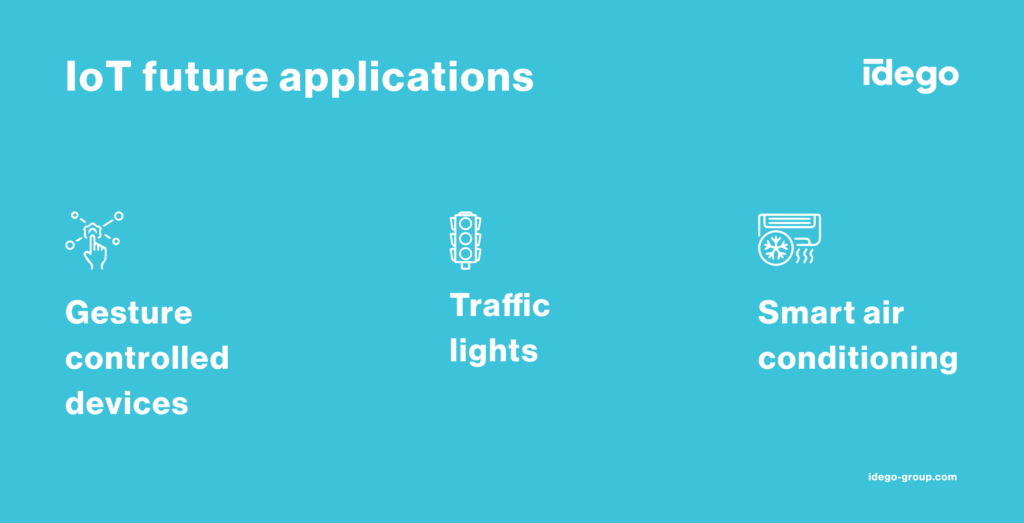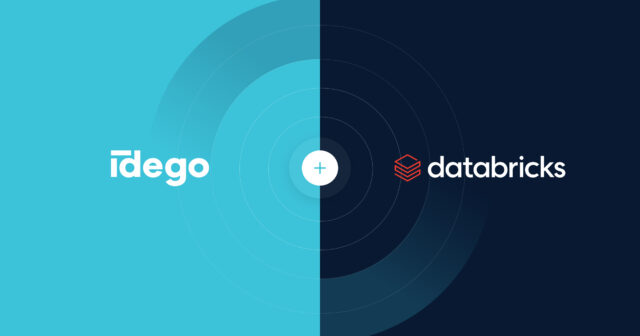
Autonomous vehicles, intelligent domestic equipment and smart machines in the industry — it is still in the future of IoT, but we continue to dream about all those inventions with impatience. The Internet of Things’ goal is to make our lives easier in many ways. Although there are more and more IoT devices now on the market, they are still quite expensive and therefore only some companies and individuals install them in their offices and homes. Can IoT change in the future?
The future of IoT is unclear for now. First of all, there is a matter of user safety to be considered. Nobody would like to realize that someone gained unauthorized access to the application used to control IoT devices and is able to open the doors of our house or turn on the oven from a distance. A second thing will be local regulations in case, for example, autonomous cars? Who is to blame if an accident occurs? As you can see, there are numerous considerations before IoT devices dominate our lives.
Internet of Things (IoT): current state
It is expected that by 2030 there will be almost 7,7 billion IoT devices in China. Probably, the two other areas that will lead in the number of IoT devices will be Europe and North America. According to the Statista Report, the global revenue for smart city solutions will reach 129 billion of US dollars already this year and domestic smart products are not even included in these statistics. Consumer spending on home smart devices decreased in 2020 due to the economic recession related to COVID-10 pandemic, but experts state that the IoT market is getting bigger and will continue to grow.
What is almost certain, the Internet of Things has already become a part of our world. The question is, how will the IoT develop in the near future? It is quite possible that we will be using IoT devices at home as well as in business quite soon.
Will IoT devices be everywhere – both in our public and private lives?
Devices making decisions on their own based on historical and real-time data to make our lives easier and save money — for some it sounds great and for others it is still SciFi reality. What can we expect?
Cities will become “smart”
Many people expect that cities get more “smart” in the next few years — this includes both public space and private homes. It is highly possible, not only because it is cool to have a lamp that adjusts light intensity on its own, but mainly because it will be cheaper. If the IoT devices in the city can use data collected through visitor kiosks, video camera surveillance systems, bikes, scooters, bus or taxi stations, our lives will soon become safer, easier, and more comfortable at a lower cost.
We will all use some sort of IoT daily
Smartwatches are an example of an IoT device that is already in use. Many people wear it. Some of us already use “a little” IoT every day – so yes, we will probably all use some sort of IoT daily in the future. It may even be that we will not have a choice, as IoT devices will be installed in public areas or our workspaces. Still, it may take some time before IoT becomes something obvious in our lives, and we still have time to consider what our lives will be like when it happens.
IoT future applications
IoT has an enormous potential in business. It can be leveraged to automate and increase production efficiency, but it could also be used to simplify everyday life. Here are some examples of how companies could take advantage of the Internet of Things in the future.

Gesture controlled devices
A wearable IoT device capable of sensing human muscle activity may allow us to remotely control any devices connected to the IoT infrastructure with a simple gesture. How does it work? Your movements would be detected by a device’s sensors and redirected to an application (software). Then the program would translate movements into commands and execute the proper action. Such a solution could have multiple applications. It can be used to stop the music from playing with a single move, but in the future, it could also enable remote craft production. Employees would only need small devices to operate the machines or produce things, being miles away from the factory.
Traffic lights
Nowadays, traffic lights are specially programmed, and they change at specific intervals. As a result of that, you can sometimes wait at red lights on an empty street, with no other cars and pedestrians. It is a waste of time. In some cities, there are already attempts to install smart traffic lights controlled with special systems capable of adjusting the length of the cycle to the actual traffic. Such software is already available on the market. In a few years, the special sensor may detect the pedestrian presence and optimally manage traffic lights.
Smart air conditioning
Such devices are still in the development phase, but they could significantly increase awareness of the conditions we live in and potentially be used to improve air quality. For example, a special system could monitor the air in your home or office and you could receive a special alert when the indoor air quality is low. Similar software could be used for adjusting heating in the office.
What is the future of IoT security?
The priority should always be safety — the safety of users and citizens (if IoT devices are installed in public places). Safety can be defined in many ways, though. We want to be safe in general, so the IoT solutions providers need to make sure that devices cannot harm users. Additionally, they also have to take care of cybersecurity and ensure that the IoT applications are properly secured to prevent any data leaks or breaches.
Cybercriminals will continue to target IoT devices
In the past, there were only a few IoT devices, hence cyberattacks were not so popular in that area. Some think, however, that as the number of Internet of Things devices used in business and private lives will grow, so will the number of cyberattacks targeting them grow too. It should not be surprising. The problem is, as IoT is still not a mature technology, there is a chance that cybercriminals will continue to find weak spots in the applications used to control devices. In other words, IoT solutions providers need to focus on ensuring the highest level of security to the users.
IoT growth will cause changes in legislation
Smart cars on the roads, domestic electronic devices controlled remotely via applications, devices collecting different types of data all the time — this all requires not only a change of thinking but also new regulations. For example, what if two autonomous vehicles crash? Who is guilty if machines are responsible for all actions? Should providers or manufacturers be to blame? Other matters have to be thought through. What data can be collected, stored, and used by IoT devices? How should it be secured, and how can particular data be used? These and many other questions will surely need to be addressed soon. The IoT popularization will certainly cause a big change in legislation in many places of the world.
The possible future of IoT
There are many predictions of the IoT industry. Nothing can be said for sure, of course. Would you like to grow your business in the next few years with the use of the Internet of Things? We can help you with that. Contact us and tell us more about IoT solutions you are interested in.








 Andrzej Kopera • Sep 05
Andrzej Kopera • Sep 05

